Wuhou Temple Travel Guide: Tips for Your Visit to Chengdu’s Iconic Landmark
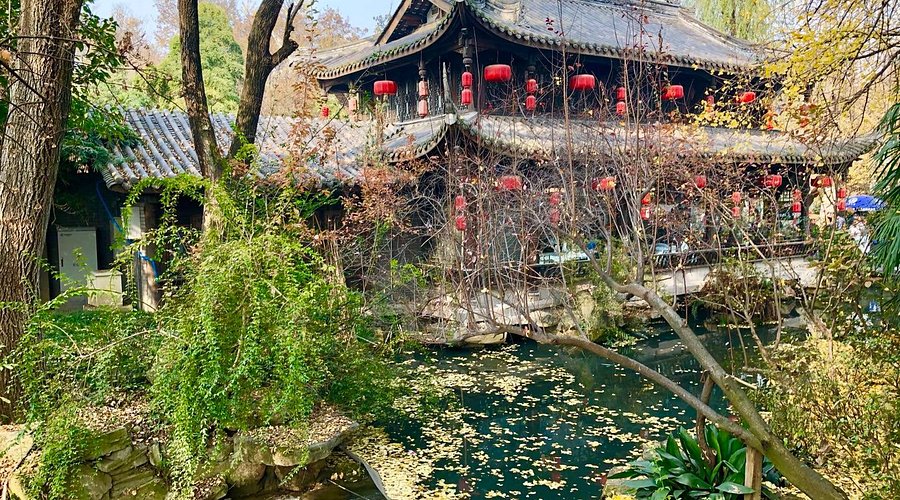
An Essential Guide to Visiting Wuhou Temple
Nestled in the heart of Chengdu, the Wuhou Temple (武侯祠) stands as a testament to China’s rich historical tapestry, offering travelers a mesmerizing journey back to the storied era of the Three Kingdoms. Established in 223 CE and later reconstructed during the Qing Dynasty, this ancient shrine honors the legendary strategist Zhuge Liang and his sovereign Liu Bei, both pivotal figures in Chinese history. As you wander through the sprawling 37,000 square meters of the temple complex, you’ll be enveloped by the tranquil ambiance of lush gardens and ancient cypress trees, while intricate carvings and statues breathe life into the tales of valor and wisdom from centuries past.
The Wuhou Temple is not merely a relic of bygone days; it is a living museum that invites you to delve into the intricacies of Chinese culture and architecture. With over 50 clay figures representing personalities from the Three Kingdoms, stunning stone carvings, and the only joint burial temple for a king and his minister in China, every corner unveils a new chapter of history. Whether you’re a history aficionado, an architecture enthusiast, or simply seeking a serene escape from the bustling city, Wuhou Temple promises an unforgettable experience that captures the essence of China’s enduring legacy. Prepare to be inspired as you step into this magnificent sanctuary and explore the profound stories that continue to resonate through time.
In This Guide
- An Essential Guide to Visiting Wuhou Temple
- The Rich History and Legends of Wuhou Temple
- Main Highlights: What You Absolutely Can’t Miss
- Planning Your Visit: A Practical Guide
- Tickets: Prices, Booking, and Tips
- How to Get There: A Complete Transportation Guide
- Local Cuisine and Accommodation Nearby
- Frequently Asked Questions
- Final Thoughts on Your Trip
The Rich History and Legends of Wuhou Temple
Nestled in the vibrant city of Chengdu, Wuhou Temple (武侯祠) is not just a shrine; it is a revered monument steeped in the rich and tumultuous history of China’s Three Kingdoms period. The temple is primarily dedicated to Zhuge Liang, the brilliant strategist and Prime Minister of the Shu Han kingdom, along with his lord, Liu Bei, the kingdom’s founding emperor. Constructed in the year 223 CE, shortly after Zhuge Liang’s death, the temple was established to honor his remarkable contributions to the Shu Han dynasty and to commemorate the bond between the two historical figures.
The origins of Wuhou Temple are rooted in a time of great strife and division, as the Three Kingdoms period (220-280 CE) saw China split into three warring states: Wu, Wei, and Shu. Amidst this chaos, Zhuge Liang emerged as a beacon of wisdom and strategy, earning a place in the hearts of the people. His legacy was further immortalized in Luo Guanzhong’s classic novel, “Romance of the Three Kingdoms,” which not only popularized his story but also transformed the shrine into a pilgrimage site for literature lovers and history enthusiasts alike.
Throughout the centuries, Wuhou Temple has undergone numerous renovations and expansions, particularly during the Qing Dynasty, which left an indelible mark on its architectural style. Today, the temple complex spans an impressive 37,000 square meters, showcasing a harmonious blend of ancient and Qing-era architectural elements. Visitors are greeted by the intricate wooden carvings and traditional roof structures that characterize the Main Hall, where statues of Liu Bei and his loyal ministers stand in solemn tribute.
One of the most remarkable features of the temple is its remarkable collection of statues and artifacts. Over 50 clay figures representing notable personalities from the Three Kingdoms era populate the complex, including the revered Zhuge Liang, whose Memorial Hall houses a statue surrounded by stunning murals that depict pivotal moments from his life. The atmosphere in this sacred space is one of reverence, inviting visitors to reflect on the enduring legacies of these historical figures.
Additionally, Wuhou Temple is home to the only joint burial temple in China dedicated to both a king and his minister, further emphasizing the unique relationship between Liu Bei and Zhuge Liang. This aspect of the temple underscores not only their historical significance but also the cultural customs surrounding loyalty and governance in ancient China.
As a recognized National Key Cultural Relics Protection Unit, Wuhou Temple stands as a testament to the profound cultural heritage of China. It invites travelers from around the globe to explore its storied past, engage with the legends of the Three Kingdoms, and appreciate the artistry and craftsmanship embedded in its architecture and gardens. Whether you are a history buff or a casual visitor, the rich history and legends of Wuhou Temple promise an unforgettable experience that transcends time, linking the past to the present in a way that continues to resonate with all who walk its paths.
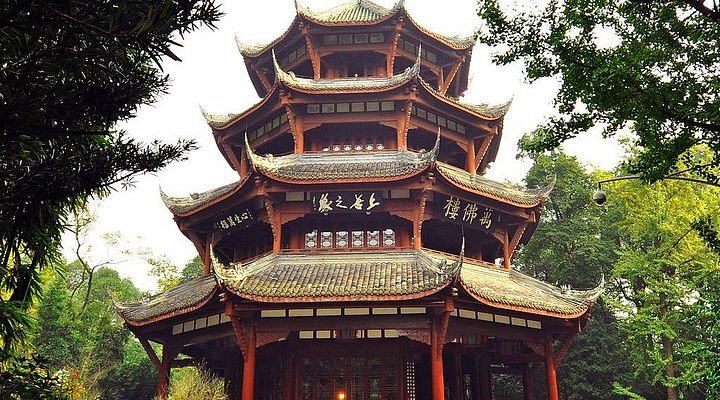
Wuhou Temple.
Main Highlights: What You Absolutely Can’t Miss
Exploring the Wuhou Temple (武侯祠) in Chengdu is like stepping into a vivid tapestry of history, artistry, and culture. This revered site, dedicated to the legendary strategist Zhuge Liang and his sovereign Liu Bei from the Three Kingdoms period, is a must-visit for any traveler. Here are the highlights you absolutely can’t miss during your visit:
Main Hall (Liu Bei Hall)
The heart of the Wuhou Temple complex is the Main Hall, where statues of Liu Bei and his key ministers reside. Marvel at the intricate wooden carvings and the classical Qing Dynasty architectural style that defines this space. The atmosphere here is both solemn and inspiring, allowing you to reflect on the valor and wisdom of these historical figures.
Zhuge Liang Memorial Hall
A visit to the Zhuge Liang Memorial Hall is essential for understanding the legacy of this renowned strategist. Inside, you’ll find a magnificent statue of Zhuge Liang, surrounded by detailed murals that illustrate pivotal moments from his life. The hall’s serene ambiance evokes reverence, making it a perfect spot for contemplation and appreciation of his contributions to Chinese history.
Triple-Gate Tower
As you approach the temple, the Triple-Gate Tower stands out with its remarkable architectural design, featuring traditional upturned eaves and intricate decorations. This tower serves as both a ceremonial entrance and a representation of the shrine’s significance, inviting visitors into a world steeped in history.
Ancient Cypress Trees
The lush grounds of Wuhou Temple are dotted with ancient cypress trees, some of which are centuries old. Among these, the “Embracing Cypresses” symbolize loyalty and friendship, echoing the bonds between Zhuge Liang and Liu Bei. Take a moment to stroll through the gardens, where these majestic trees create a tranquil environment that enhances the temple’s charm.
Clay Figurines and Stone Carvings
Throughout the temple, over 50 clay figurines depict various personalities from the Three Kingdoms era, showcasing the artistic craftsmanship of the time. In addition, exquisite stone carvings narrate historical scenes and significant events, making these artistic treasures a highlight for anyone interested in the cultural heritage of China.
Inscribed Stone Tablets
The temple complex houses numerous inscribed stone tablets, with many containing famous sayings and poetry. One of the most valuable is the Tablet of Triple Success, erected in 805 AD. Standing at an impressive 144 inches high, it captures the wisdom of a renowned official and serves as a testament to the literary legacy that surrounds the Three Kingdoms period.
Traditional Cultural Activities
If your visit coincides with special events, don’t miss the chance to experience traditional calligraphy demonstrations, music performances, and tea ceremonies within the serene garden pavilions. These cultural activities provide a deeper understanding of the customs and artistic expressions rooted in this historic site.
Seasonal Events
Depending on when you visit, you might be lucky enough to witness seasonal events like the Spring Festival or Mid-Autumn Festival celebrations. These vibrant occasions often include historical reenactments and traditional opera performances, adding an extra layer of excitement and engagement to your experience at the temple.
Visitor Amenities
Plan to spend at least 2-3 hours exploring this expansive complex. To enhance your visit, consider renting an English audio guide, which provides insightful commentary on the key attractions. The temple is easily accessible via public transport, with well-marked routes leading to its entrance.
Visiting the Wuhou Temple is not just a journey through history; it’s an immersive experience that connects you to the rich cultural tapestry of China. Whether you are a history buff or a casual tourist, this magnificent site promises to leave you with lasting memories and a profound appreciation for the legends of the Three Kingdoms.
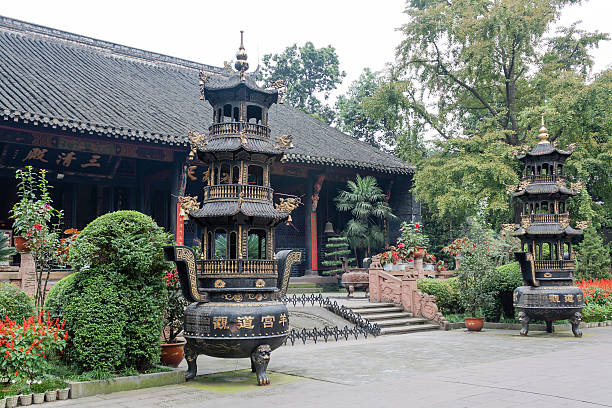
Wuhou Temple.
Planning Your Visit: A Practical Guide
Visiting Wuhou Temple is an enriching experience that transports you back to the iconic Three Kingdoms period of China. This practical guide will help you navigate your visit to this historical gem in Chengdu, ensuring you make the most of your time at this revered site.
Getting There
Public Transport:
– Metro: Take Line 3 to Wuhouci Station, Exit D. The temple is a short walk from the station.
– Bus: Routes 57, 82, 213, 300, and 534 will take you to Wuhouci Station.
– Taxi: If you prefer a taxi, just show the driver “武侯祠” (Wu Hou Ci) to ensure they take you directly.
Opening Hours and Admission Fees
- Hours: The temple is open daily from 8:00 AM to 6:00 PM, with the last entry at 5:00 PM.
- Admission Fees:
- Adults: CNY 50
- Students/Seniors: CNY 25
- Free entry for children under 1.2 meters tall.
Duration of Visit
Most visitors spend 2-3 hours exploring the temple complex. If you are particularly interested in history, consider allocating a half-day to fully appreciate the architectural beauty and historical significance of the site.
Essential Tips for Your Visit
- Plan Ahead: Download a map from the official temple website to familiarize yourself with the layout.
- Guided Tours: Consider hiring an English-speaking guide for a deeper understanding of the temple’s history and significance. Guided tours typically start at CNY 100.
- Audio Guides: Available for rental at CNY 40 (with a CNY 200 deposit).
Photography Guidelines
- Photography is allowed in most areas, but be mindful of no-photo zones, particularly near certain artifacts.
- For the best lighting, visit in the early morning (between 8:00 AM and 10:00 AM) or late afternoon (from 3:00 PM to 5:00 PM). Avoid the midday heat during the summer months.
Best Times to Visit
- Spring (March-May): Enjoy blooming gardens and comfortable temperatures.
- Autumn (September-November): Experience clear skies and pleasant weather.
- Summer (June-August): While it can be hot, this season sees fewer crowds.
- Winter (December-February): Expect crisp weather and fewer tourists, making for a quieter experience.
Special Experiences
The temple often hosts traditional cultural activities, including:
– Calligraphy demonstrations
– Traditional music performances during festivals
– Tea ceremonies in the serene garden pavilions
– Historical reenactments on special occasions
Check the temple’s schedule for seasonal events like the Spring Festival and Mid-Autumn Festival activities.
Nearby Attractions
Wuhou Temple is conveniently located near other attractions in Chengdu:
– Jinli Ancient Street: A bustling area filled with shops, eateries, and traditional architecture, perfect for a post-temple stroll.
– Wide and Narrow Alleys: A scenic area showcasing traditional Chengdu architecture and culture, within walking distance from the temple.
Accessibility
- Wheelchair Access: Wheelchairs are available for rent free of charge (ID required).
- Storage Lockers: Small lockers are available for CNY 10 to secure your belongings while you explore.
Final Thoughts
Wuhou Temple is not just a historical monument; it’s a vibrant part of Chengdu’s cultural fabric. Whether you’re a history buff, a culture seeker, or simply a curious traveler, this magnificent complex offers a unique glimpse into China’s storied past. With its serene gardens, intricate architecture, and fascinating narratives, your visit to Wuhou Temple promises to be both enlightening and memorable.
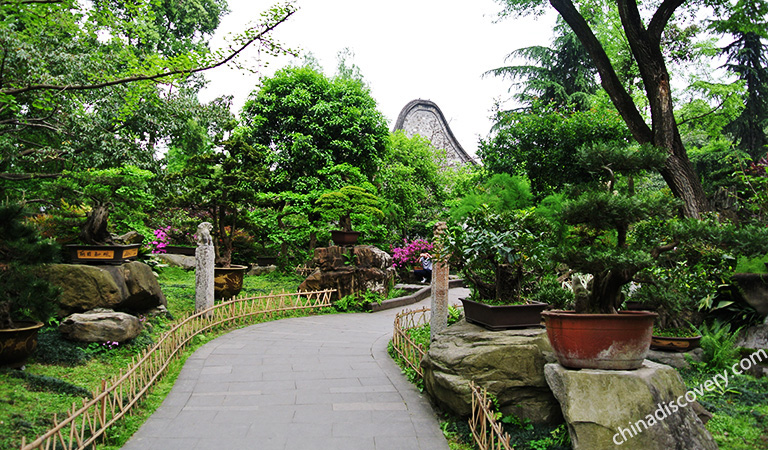
Wuhou Temple.
Tickets: Prices, Booking, and Tips
When planning your visit to the magnificent Wuhou Temple (武侯祠), it’s essential to know the ticketing details to ensure a smooth experience. This remarkable historical site, dedicated to Zhuge Liang and Liu Bei from the Three Kingdoms period, invites visitors to step back in time while exploring its stunning architecture and serene gardens.
Admission Fees
- Adults: CNY 50 per person
- Students/Seniors: CNY 25 per person (valid student ID or senior identification required)
- Children: Free admission for children under 1.2 meters tall
Opening Hours
- Daily: 8:00 AM – 6:00 PM (last entry at 5:00 PM)
Booking Tips
- On-Site Purchase: Tickets can be bought directly at the temple entrance, making it convenient for spontaneous visits.
- Guided Tours: For a more enriched experience, consider booking a guided tour in advance. Guided tours start from CNY 100 and often include in-depth insights into the temple’s history and architecture.
Additional Services
- Audio Guides: Available for rent at CNY 40 (with a CNY 200 deposit), these guides provide valuable context as you explore the temple’s various halls and gardens.
- Wheelchair Rentals: Free wheelchair rentals are offered with an ID, ensuring accessibility for all visitors.
- Storage Lockers: Available for CNY 10, perfect for stowing away personal items during your visit.
Getting There
The temple is easily accessible via public transit:
– Metro: Take Line 3 to Wuhouci Station, and exit at Exit D.
– Bus: Multiple bus routes (57, 82, 213, 300, 534) serve the area, with a stop at Wuhouci Station.
– Taxi: Simply show the driver “武侯祠” (Wu Hou Ci) for direct access.
Pro Tips
- Best Time to Visit: Early mornings (8:00-10:00 AM) are ideal for photography and a quieter atmosphere. Late afternoons (3:00-5:00 PM) also offer pleasant lighting and fewer crowds.
- Duration: Plan to spend at least 2-3 hours to fully appreciate the temple’s beauty and historical significance.
With this information in hand, you’re well-equipped to embark on an unforgettable journey through the rich tapestry of China’s Three Kingdoms history at Wuhou Temple. Enjoy your visit!
How to Get There: A Complete Transportation Guide
Visiting Wuhou Temple (武侯祠) in Chengdu is an enriching experience that combines history, culture, and stunning architecture. To make your journey to this esteemed site as seamless as possible, here’s a comprehensive transportation guide that will help you navigate your way there.
Getting to Wuhou Temple
By Metro
The Chengdu Metro offers a convenient and efficient way to reach Wuhou Temple. Simply take Line 3 and disembark at Wuhouci Station. From there, follow the signs to Exit D, which will lead you directly to the temple entrance. The metro is not only affordable but also a great way to avoid traffic, especially during peak hours.
By Bus
For those who prefer using the bus, several routes can take you close to Wuhou Temple. Look for the following bus lines:
– Route 57
– Route 82
– Route 213
– Route 300
– Route 534
All these buses stop at Wuhouci Station, just a short walk from the temple.
By Taxi
Taking a taxi is another convenient option, especially if you’re traveling with a group or have luggage. Simply show the driver the characters “武侯祠” (Wu Hou Ci) on your phone or a piece of paper. The taxi ride from central Chengdu should take around 15-30 minutes, depending on traffic.
By Bicycle or Scooter
If you’re feeling adventurous, renting a bicycle or an electric scooter can add an extra layer of fun to your visit. Chengdu has several bike-sharing services available. After renting, simply navigate to the temple using a map app. The ride through the city will offer you a chance to soak in the local atmosphere.
Parking
If you’re driving to Wuhou Temple, there is parking available nearby. Make sure to arrive early, especially on weekends or holidays, as space can fill up quickly.
Planning Your Visit
- Opening Hours: The temple is open from 8:00 AM to 6:00 PM, with the last entry at 5:00 PM.
- Admission Fee: Adult tickets are priced at CNY 50, while students and seniors can enter for CNY 25. Children under 1.2 meters in height can enter for free.
Tips for a Smooth Journey
- Language: While many signs are in English, it’s always helpful to have a translation app handy, especially when communicating with taxi drivers.
- Peak Times: If possible, visit during weekdays or in the early morning to avoid large crowds.
- Nearby Attractions: Wuhou Temple is close to other attractions like Jinli Ancient Street and the Wide and Narrow Alleys, making it easy to combine visits.
By following this transportation guide, you’ll be well-equipped to embark on your journey to Wuhou Temple, immersing yourself in the rich history and culture of Chengdu along the way. Enjoy your visit!
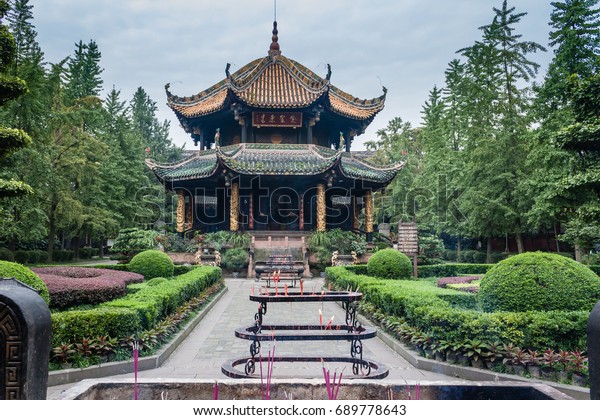
Wuhou Temple.
Local Cuisine and Accommodation Nearby
Nestled in the vibrant heart of Chengdu, Wuhou Temple is surrounded by a wealth of culinary delights and comfortable accommodations, making it an ideal spot for international travelers looking to immerse themselves in local culture.
Culinary Delights
Sichuan Cuisine: No visit to Chengdu is complete without indulging in the region’s famed Sichuan cuisine, characterized by its bold flavors and spicy kick. Just a short walk from Wuhou Temple, you’ll find several excellent eateries where you can savor local specialties:
-
Chen Mapo Tofu (陈麻婆豆腐): Known for its signature dish, mapo tofu, this restaurant offers a spicy, mouth-numbing experience. The tofu is silky and perfectly seasoned, making it a must-try for spice enthusiasts.
-
Chengdu Dandan Noodles (成都担担面): A small, cozy spot famous for its dandan noodles, this dish features a rich, spicy sauce topped with minced meat and scallions. It’s a quick and satisfying option for a casual lunch.
-
The Bridge(桥头火锅): For an authentic hot pot experience, head to The Bridge, where you can cook a variety of fresh ingredients in bubbling spicy broth right at your table. The lively atmosphere adds to the enjoyment of this communal dining experience.
-
Jinli Ancient Street Snacks (锦里小吃): Just a stone’s throw away, Jinli Street is lined with vendors offering a variety of street food, from spicy skewers to sweet rice cakes. It’s the perfect place to grab a snack while exploring the area.
Comfortable Stays
After a day of exploring the rich history of Wuhou Temple, unwind in one of the nearby accommodations that offer comfort and convenience:
-
The Ritz-Carlton, Chengdu: A luxurious option that combines modern elegance with traditional Chinese touches, this hotel is located just a short drive from Wuhou Temple. Guests can enjoy exquisite dining options and a serene spa experience after a day of sightseeing.
-
Hantang House (汉唐阁): This boutique hotel offers a more intimate experience with tastefully decorated rooms inspired by traditional Chinese aesthetics. Situated in the lively Jinli area, it’s perfect for those who want to immerse themselves in the local culture.
-
Wuhou Hotel (武侯酒店): A practical choice for budget-conscious travelers, this hotel provides clean, comfortable rooms within walking distance of the temple. It’s a great base for exploring Chengdu without breaking the bank.
-
Chengdu Marriott Hotel Financial Center: This contemporary hotel features spacious rooms and excellent amenities, including a rooftop bar with stunning views of the city. Its proximity to public transport makes it easy to explore Chengdu’s attractions.
Whether you’re savoring mouthwatering Sichuan dishes or relaxing in a cozy hotel, the area surrounding Wuhou Temple offers a delightful blend of culture, history, and comfort. Your Chengdu adventure is sure to be memorable!
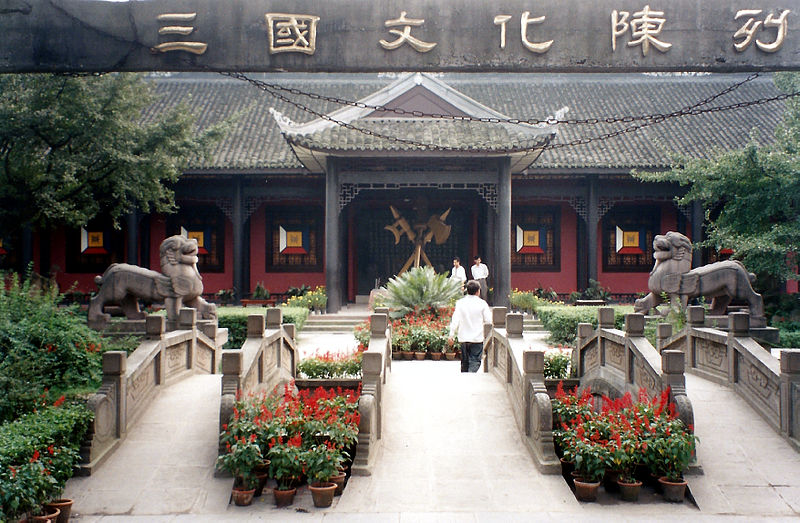
Wuhou Temple.
Frequently Asked Questions
Frequently Asked Questions about Wuhou Temple
-
What is the best time to visit Wuhou Temple?
The ideal times to visit are during spring (March to May) and autumn (September to November) when the weather is mild, and the gardens are blooming. Early mornings (8:00 AM to 10:00 AM) are also great for avoiding crowds and capturing beautiful photographs. -
How do I get to Wuhou Temple?
You can easily reach Wuhou Temple by taking Metro Line 3 to Wuhouci Station, using Exit D. Buses 57, 82, 213, 300, and 534 also stop nearby. If you prefer a taxi, simply show the driver the characters “武侯祠” (Wu Hou Ci). -
Is there an admission fee?
Yes, the admission fee for Wuhou Temple is CNY 50 for adults, CNY 25 for students and seniors, and free for children under 1.2 meters tall. -
Are guided tours available?
Yes, English audio guides can be rented for CNY 40 at the entrance, and you can also book an English-speaking guide in advance through the temple’s official website for a more in-depth experience. -
How long should I plan to spend at the temple?
Most visitors typically spend around 2-3 hours exploring the complex. If you have a keen interest in history, you might want to allocate up to half a day to take in all the details. -
Can I take photographs inside the temple?
Photography is allowed in most areas, but there are specific halls where it is prohibited. Early mornings offer the best natural lighting for photos, and if you plan to use a tripod, you may need to seek permission. -
What other attractions are nearby?
Wuhou Temple is conveniently located near other popular spots like Jinli Ancient Street and the Wide and Narrow Alleys, making it easy to explore more of Chengdu in one trip. -
Are there any cultural experiences available at the temple?
Yes! The temple often hosts traditional calligraphy demonstrations, music performances during festivals, and tea ceremonies in the garden pavilions. Keep an eye out for seasonal events that may include cultural heritage days and traditional opera performances.
Final Thoughts on Your Trip
As you wrap up your visit to the Wuhou Temple, take a moment to reflect on the layers of history that envelop you within this sacred space. The whispers of the past resonate through the ancient cypress trees, the intricately carved figures, and the serene gardens, inviting you to connect with the legendary tales of Zhuge Liang and Liu Bei. This is not merely a monument; it is a living narrative that captures the essence of a pivotal era in Chinese history—the Three Kingdoms.
Whether you stand in awe of the Main Hall’s architectural splendor or stroll along the tranquil pathways, Wuhou Temple offers a unique opportunity to immerse yourself in the cultural and historical richness of Chengdu. The artistry, the stories, and the spirituality of this place linger long after your visit.
As you leave, carry with you not just memories of remarkable sights, but also a deeper understanding of the values of loyalty, strategy, and leadership that Zhuge Liang embodied. The Wuhou Temple is a testament to the enduring legacy of its heroes, inviting you to explore not only the past but also your own journey through the vibrant tapestry of Chinese culture. Safe travels, and may your adventures continue to inspire and enlighten!